| | Introduction | Pasture Bloat | Stored and processed legume feeds | Feedlot Bloat | Treatment | Common questions and answers | References | Acknowledgements
.
Introduction
This publication provides information on the causes, control, and treatment of bloat in cattle and is intended for livestock producers, veterinarians, and agrologists. The authors have observed bloat produced under experimental conditions by feeding fresh alfalfa and bloat-causing feedlot diets. Bloat has also been observed under grazing conditions on alfalfa pastures.
Although the information in this publication is oriented around livestock production in western Canada, the general principles are widely applicable, and the publication should provide valuable information for other regions.
Bloat is a complex disease that is difficult to predict under field conditions. As a result, field observations have led to varied and conflicting theories about its causes. This publication presents well-established facts and consistent field observations based on collective experience. Recommendations are made on this basis and on research reports, general observations, and on the experience of cattle producers.
History
Bloat is a disease that has been described in agricultural writings since at least A.D. 60. Few livestock diseases have such a long and colorful history. Even the names for bloat have changed considerably over the years.
English journals of the 18th and 19th centuries describe the disease using various terms: hoove, hoven, tympany, and blown. The French word "meteorisation," meaning the process of ballooning, is still used to describe bloat.
In past centuries, a bellyful of gas was attributed to a poison, to excessive gas production, or to blockage caused by the excessive consumption of dense feed. These and other explanations were the objects of experimental research in several countries from the 1940s to the 1960s.
A few recommendations from the past seem unusual today, e.g., "feathers burnt and held for some time while in full smoke, close under the nose of the animal" (ca. 1795); and "a pint of gin to each animal" (ca. 1925).
Some current practices have been used for many years. For example, placing an animal's front feet on a mound so that the front feet are higher than the back feet helped to ease bloat because the esophagus was thus elevated, and the gas was expelled more easily. Enforced moderate exercise, such as walking, was a commonly-used treatment for bloat and was often effective if used before bloat reached the acute stage. Another method involved placing a stick or rope through an animal's mouth to encourage salivation, which breaks down rumen foam. A book published in the early 18th century emphasized the need for care when cattle are first put into "clovergrass."
In 1925, the London Society of Arts awarded a silver medal for the design of a 4 inch (10 cm) trocar and cannula, instruments used for the emergency treatment of severely bloated animals.
The frothy basis of pasture bloat was generally accepted only after vigorous debate and wide publicity of various and diverse theories in agricultural journals. Anti-bloat detergents such as poloxalene were developed during the same period. Eventually, animal nutritionists learned how to control feedlot bloat through diet formulation and care in feed processing.
The incidence of pasture bloat increased around the world with the introduction of legume forages into cultivated pastures. Feedlot bloat came into prominence with the development of feedlot finishing of beef cattle. Bloat in sheep is much less of a problem than in cattle.
Normal production and expiry of gas
Ruminant animals carry an active population of micro-organisms (bacteria, fungi, and protozoa) in the forestomach of their digestive system. Without these organisms, the animal would be unable to digest fibrous feeds, such as grasses and legumes. In the process of digesting these materials, the micro-organisms produce large quantities of gas that must be expelled. When steers are fed fresh alfalfa, they produce up to 2 L of gas per minute.
Under normal conditions, the gas produced in the rumen separates from the solid and liquid contents and then rises to the top of the rumen, where it collects as a free bubble (Figure 1). Eructation, or belching, is initiated by increasing gas pressure in the rumen. When an animal belches, the rumen contracts and pushes the free gas toward the front of the rumen, where it collects around the esophageal opening.
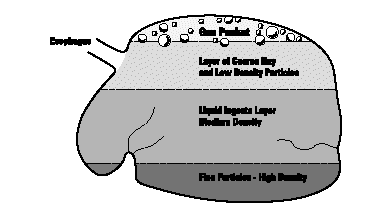
Figure 1. Gas pocket above the various layers of rumen contents
The opening of the esophagus is controlled by receptors in the rumen wall that can sense when the area is exposed to liquid or to free gas. If the area is covered by liquid or foam, the esophagus remains tightly closed, preventing belching. This trait apparently has evolved in ruminant animals to prevent rumen fluid or foam from accidentally entering the lungs, which would cause aspiration pneumonia.
Eructation occurs when the receptors surrounding the esophagus sense that free gas is present. As the esophagus relaxes, the animal takes a deep breath, drawing the gas up the esophagus. Most of the gas (about 60%) then enters the lungs, and the remainder is expelled through the mouth. As most of the eructated gas enters the lungs before it is exhaled, it is difficult to notice or hear an animal eructate. If a large amount of gas is eructated, however, either or both a sound or a smell will be noticeable.
Eructation, or belching, normally occurs about once every minute and requires about 10 seconds to be completed. The volume of gas produced by rumen fermentation increases after feeding and peaks in two to four hours. To accommodate increased rates of gas production, belching occurs more often, up to three or four times per minute. Normally, the process is efficient in expelling large volumes of gas from the rumen.
Mechanisms of bloat
Bloat occurs when the eructation mechanism is impaired or inhibited and the rate of gas production exceeds the animal's ability to expel the gas. Because large volumes of gas are produced in the rumen, bloat can develop very quickly. In both legume and feedlot bloat, the eructation mechanism is commonly inhibited by frothy or foamy rumen contents. The gas remains trapped in the rumen fluid, forming an emulsion of small bubbles about 1 mm in diameter. The frothy rumen contents expand, filling the rumen cavity and inhibiting the nerve endings that control the opening into the esophagus. This condition is known as frothy bloat.
Animals can tolerate moderate frothiness of rumen contents without exhibiting bloat, or they may expel enough gas from moderately frothy rumen contents to recover from mild bloat without treatment. When frothy bloat is severe, the pressure in the rumen eventually inhibits all ruminal contractions. This condition is called atony.
The existence of frothy and free-gas bloat can be determined by passing a stomach tube into the rumen. When the rumen contents are frothy, the tube fills with froth and the gas cannot be relieved. When the animal is bloated with free gas, the gas pocket is usually easy to locate with the tube, and the expulsion of gas through the tube provides immediate relief from the bloated condition.
Frothy bloat
Although frothy rumen contents are characteristic of both legume pasture bloat and feedlot bloat, the physical and chemical explanations for the two conditions were quite different until recently. According to the traditional theory of legume pasture bloat, froth was attributed to soluble proteins in the rumen fluid, which were produced by legume forages. One protein, known as 18S, or fraction 1 protein, initially received particular attention. The foaming properties of all soluble proteins are well known, so it was reasonable to suspect them as the cause of pasture bloat.
However, although they are a contributing factor, soluble proteins alone do not account for the extreme viscosity of frothy rumen contents. Because soluble protein concentrations in rumen fluid do not correlate with the occurrence of bloat in cattle that are fed fresh alfalfa, they cannot be the culprits.
Current theories place more emphasis on the involvement of small particles and microbial activity. Alfalfa, which is rapidly digested, provides for bacterial blooms, producing large quantities of both gas and slime. Investigations with cattle that were fed fresh alfalfa at the Kamloops Range Research Unit revealed an association between the concentration of small particles or fragments of chloroplasts from the alfalfa in the rumen contents and the occurrence of bloat. The rumen bacteria attached to these particles (Figure 2) have an abundance of carbohydrates, both internal - in the form of storage granules - and external - in the form of slime. The occurrence of bloat is consistently associated with increased levels of these particles in the rumen fluid (Figure 3).
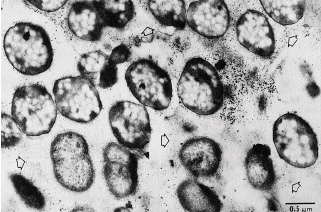
Figure 2. Bacterial population of the rumen fluid of a cow with pasture bloat - the arrows indicate slime
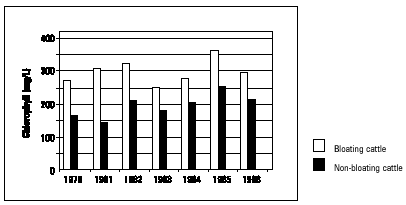
Figure 3. Average pre-feeding concentrations of particulate chlorophyll in the rumen of bloating and non-bloating cattle
Frothy feedlot bloat has been attributed to small feed particles in grain rations (Figures 4 and 5) that cause slime to form in rumen contents. The slime is made up primarily of polysaccharides secreted by rumen bacteria and released from ruptured bacterial cells. The bacterial polysaccharides increase the viscosity of rumen fluid and subsequently trap small gas bubbles in the rumen fluid, leading to frothy rumen contents and bloat.
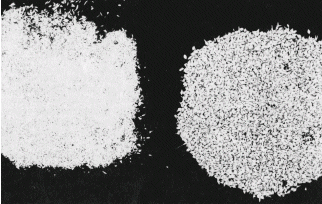
Figure 4. Left: dry-rolled grain is too fine and can cause bloat Right: tempered and rolled grain is coarse and free of dust
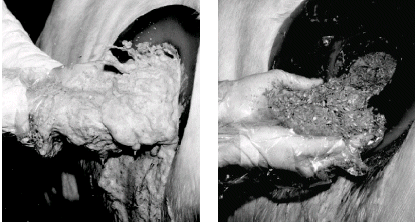
Figure 5. Left: foaming rumen contents from cows fed fine-particle feed creates a potential for bloat.
Right: rumen contents contains no foam when animal is fed coarse-particle feed
A unified theory of frothy bloat has been proposed that recognizes the similarity of factors observed when pasture and feedlot bloat occur (Table 1). The similar features are readily digested feedstuffs, diets high in grain or fresh immature alfalfa and an abundance of small particles in the rumen contents. Small particles and slime produce a frothy bloat complex when gas bubbles, produced as feed digestion continues, become trapped in the slime-particle mix. This publication suggests strategies for the diagnosis and management of frothy bloat.
Table 1. Similarities between feedlot bloat and alfalfa pasture bloat
| Feature | Feedlot bloat | Alfalfa pasture bloat | Function |
| Readily digested feedstuff | High grain ration | Fresh immature alfalfa | Energy source for bacterial growth and rapid slime and gas production |
| Small particles in rumen content | Fine grain particles | Alfalfa chloroplast particles | Small particles add to slime matrix |
| Viscous rumen contents | Microbial slime | Microbial slime | Matrix to trap particles and gas |
Free-gas bloat
Free-gas bloat in feedlot animals is more sporadic than frothy bloat, usually affecting a few animals rather than a large number. Free-gas bloat generally occurs very rapidly and provides little warning for treatment. Free-gas bloat accounts for approximately 10 per cent of the cases of feedlot bloat. Irregular feed intake, inhibition of the nerves controlling the contractions of the rumen walls, and physical obstruction of the esophagus may cause free-gas bloat.
Irregular feed intake may occur as a result of uneven feeding intervals, illness (such as a mild grain overload), changing weather, a change in the diet, unpalatable feed resulting from spoilage, or an interruption in the supply of salt or water. Excess acidity in the lower gut can inhibit rumen movement. If rumen movement is inhibited as a result of grain overload or for any other reason, free-gas bloat might develop.
The vagus nerves, which connect the rumen wall to the central nervous system, pass alongside the esophagus in the neck of the animal. At the rumen, these nerves branch out and spread over the rumen surface. When functioning properly, the vagus nerves convey information from the nerve sensors in the rumen wall to the brain centres and transmit signals from the brain for the control of the muscles in the rumen wall.
If the vagus nerves are damaged, information transferred to and from the rumen can be impaired. Depending on the severity of the damage, rumen function can be affected to various degrees. Mild damage may not be visibly expressed in an animal, whereas severe damage may cause an animal to suffer from chronic bloat, feed impaction, lack of appetite, or a combination of these symptoms.
The cause of nerve damage or vagal indigestion is often difficult to determine, but is usually related to inflammation of the peritoneum; "hardware disease" is the most common cause. Hardware disease results when an ingested wire or nail punctures the reticular wall and inflames the peritoneum. If the inflammation is close to a major nerve branch, it reduces the normal motility of the rumen and the reticulum, and thus, impairs their function. Cattle that have overcome severe respiratory disease often suffer from chronic feedlot bloat as a result of damage to the vagal nerve.
Calves are more prone to chronic free-gas bloat than are older animals. There is no obvious association with the type of feed used or with pathological problems. Veterinary experience and observations indicate that physical abnormalities in the positioning of the rumen may occur in this early developmental period. If the attachment of the rumen to the esophagus is not properly aligned, eructation of the gas bubble may be impaired. Animals that exhibit bloat at an early age often outgrow the problem.
If a foreign object creates a physical obstruction in the esophagus, gas is trapped in the rumen and causes acute free-gas bloat. Blockages can occur in a number of ways, but happen most frequently when an animal swallows a large object that does not pass into the rumen. Feeding whole potatoes, beets, carrots, or fruit has caused problems. Pathological growths occurring in the esophagus or rumen that form a blockage can also cause free-gas bloat.
General clinical findings
When an animal dies suddenly or is found dead, bloat is commonly at fault. Pastured beef cattle are not checked as regularly as dairy cattle, so they are more likely to be found dead when they suffer from bloat. Feedlot cattle that die as a result of bloat are commonly found dead in the morning, possibly because they are inactive during the night or because they are not seen, detected, and treated.
Cattle that are milked and observed regularly may begin to become bloated 30 minutes to 1 hour after they are turned out to a bloat-producing pasture. However, there is commonly a lag of 24 to 48 hours before bloating occurs in cattle that have been placed on a bloat-producing pasture for the first time. They may become bloated on the first day, but bloat more commonly occurs on the second or third day.
An unexpected bloat episode can occur in pastured beef cattle that have been on a pasture for several days or weeks before bloat occurs. This episode is always a surprise to the owner and the veterinarian, who find it difficult to understand why bloat is suddenly occurring on a pasture that has been problem-free for some time. In many instances, bloat may be incorrectly diagnosed, as the rumen will swell after death regardless of the cause of mortality.
In pasture (or frothy) bloat, distension is usually more obvious in the upper left flank, although the whole of the rumen can be enlarged. The animal is uncomfortable and may get up and lie down frequently, defecate often, kick at the belly, and roll over in attempting to relieve the discomfort. Breathing is difficult or labored (a condition known as dyspnea) and occurs through the mouth. The animal protrudes the tongue, salivates, and extends the head. Its respiratory rate increases to up to 60 inhalation-exhalation cycles per minute. Occasionally, projectile vomiting occurs, and the animal may expel soft feces in a stream.
Ruminal movements are usually much increased in the early stages and may be almost continuous, but the sounds are less audible because of the frothy nature of the ingesta. Later, when the distension is extreme, the movements are decreased and may be completely absent. The tympanic note or drum sound produced by percussion (tapping on the distended rumen) is characteristic. Before severe bloat (known as clinical tympany) occurs, a temporary increase in eructation and rumination can be noted, but both disappear with severe bloat.
Death may occur quickly, but usually does not take place until 2 to 4 hours after the onset of bloat. When the bloat becomes severe enough, the animal collapses and dies quickly, almost without a struggle. Death is likely caused by suffocation, when the distended rumen pushes against the diaphragm and prevents inhalation.
In a group of affected cattle, a number of animals with severe bloat can usually be found, and the remainder have mild to moderate distension of the left flank. These animals are uncomfortable and graze for only short periods. In dairy cattle, milk production is reduced, perhaps because the animal has reduced its feed intake or due to a failure of milk letdown.
In free-gas bloat, the excess gas is usually present as a free-gas cap on top of the solid rumen contents (Figure 1). As in pasture bloat, an increase in rate and force of ruminal movement in the early stages usually occurs, followed by atony (i.e., weaker or absent activity). Inserting a stomach tube with the aid of a speculum allows the animal to expel large quantities of gas, thus easing rumen distension. In addition, any esophageal obstruction can be detected when the stomach tube is passed into the animal.
Pasture Bloat
Predisposing factors
Crops
Forages are classified as either bloat-causing or bloat-safe, with only a few varieties occurring between the two poles, depending on how pastured cattle and sheep respond to them as feed (Table 2). The type of pasture forage used usually determines the risk of bloat. Grasses are usually bloat-safe, but common legumes such as alfalfa and clovers may not be. Several less popular legumes have been pastured intensively without causing bloat.
The following alfalfa cultivars were tested for bloat potential in cattle and were found to cause bloat: Saranac, Rambler, Washo, Beaver, Thor, Ranger, Roamer, Anchor, Apollo, WL-316, Trumpetor, and Vertus. This test disproved the claim that the creeping-rooted cultivars
(e.g., Roamer, Rambler) are bloat-safe.
Table 2. Bloat-causing, low-risk, and bloat-safe forages used as pasture
| Bloat-causing | Low-risk | Bloat-safe |
| Alfalfa | Arrowleaf clover | Sainfoin |
| Sweetclover | Spring wheat | Birdsfoot trefoil |
| Red clover | Oats | Cicer milkvetch |
| White clover | Rape | Crownvetch |
| Alsike clover | Perennial ryegrass | Lespedeza |
| Winter wheat | Berseem clover
Persian clover | Fall rye
Most perennial grasses |
The bloat-causing potential of crops is related to the ease with which they are digested by rumen microbes. Bloat-causing forages are digested rapidly, whereas bloat-safe forages are digested more slowly (Figure 6). The low-risk group shows an intermediate rate of digestion. Isolated cases of bloat have been reported with grasses and slowly digested legumes, especially at very lush, early stages of growth.
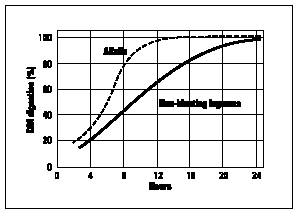
Figure 6. Association between bloat causing potential of legume forages and their rates of digestion by rumen microbes
Tannins in the plant bind with soluble proteins (foaming agents) and inhibit the activity of rumen microbes. Thus, all tannin-containing forages are bloat-safe. Other bloat-safe characteristics include leaves with thicker, stronger cell walls and veins that inhibit rumen bacteria from invading the interior structure of leaves. Conversely, bloat-causing forages have leaves with thin cell walls and low mechanical strength, which make them more vulnerable to invading rumen bacteria.
The Saskatoon Research Centre, in cooperation with Agriculture and Agri-Food Canada research centres in Lethbridge and Kamloops, had a program to develop reduced bloat alfalfa, which culminated in the release of AC Grazeland in 1997. This variety reduced bloat by an average of 56 per cent when compared to Beaver, a parent cultivar. However, no difference was detected when AC Grazeland was compared to Alfagraze, a cultivar selected for grazing tolerance.
Stage of growth
Stage of growth or crop maturity is the most important factor in preventing pasture bloat. Bloat potency is highest at the vegetative (or prebud) stage, decreasing progressively as the plant grows and matures to full flower.
Recently at Kamloops, alfalfa at the vegetative, bud and bloom stages of growth was harvested simultaneously and fed to three groups of cattle in a three-way crossover experiment. The vegetative stage yielded the highest incidence of bloat (129 cases in 2 years) as compared with the bud (20 cases) or bloom stage, which had no cases of bloat. Concurrently, the leaf-to-stem ratio also decreased, which would correspond to a decrease in chloroplast numbers and a decrease in chloroplast particles in the rumen. The non-occurrence of bloat is associated with a decrease in chloroplast particles in the rumen (Figure 3).
The importance of alfalfa maturity should also be considered when managing grass-legume mixtures. At Kamloops, alfalfa that was 20 to 25 cm high produced twice as much bloat as did alfalfa that was 51 to 75 cm high (Table 3). However, plants more than 50 cm high still represented a substantial risk for causing bloat, especially during the first cut. The height of alfalfa also affects the leaf-to-stem ratio.
Table 3. Risk of bloat in cattle fed fresh alfalfa of various heights during five growing seasons
Height of alfalfa
(cm) | Probability of bloat*
occurrence in the herd (%) | Number of observations of bloat (days) |
| 20 - 25 | 43 | 54 |
| 26 - 50 | 33 | 360 |
| 51 - 75 | 22 | 130 |
*Bloat is said to occur when one or more animals exhibit bloat on a given day.
Moisture
Bloat has historically been associated with lush growth of pasture forage. Reports of grasses that cause bloat are rare and are restricted to vegetative and lush pastures, where initial digestion rates are high. Alfalfa's potential for causing bloat is highest when moisture conditions are optimal for vegetative growth. Under these conditions, the stems become turgid and fleshy but not fibrous; the leaves are soft and easily crushed between the fingers.
The bloat potential of alfalfa is reduced when soil moisture is insufficient because of either drought or soil salinity. The bloat potential of alfalfa is not significantly affected by irrigation that maintains the soil moisture at 50 per cent of field capacity. At Kamloops, alfalfa is grown under irrigation, and the impact of seasonal rainfall patterns on the incidence of bloat cannot be assessed.
Weather
Daily weather records from seven growing seasons (1976 - 1982) at Kamloops, BC, were examined to identify relationships between weather conditions and the daily occurrence of bloat. Parameters not associated with the frequency of bloat include:
- hours of sunshine
- temperature range
- precipitation
- incoming solar radiation
- potential evapotranspiration
Days on which bloat occurred were preceded by lower maximum and minimum temperatures than days when there was no bloat, but the temperature difference was small (1 to 2 °C). When yearly averages were compared in Kamloops, bloat was more frequent in dry years than in years of high moisture.
The effect of temperature on bloat potential is complex. Bloat seems to occur when moderate daytime temperatures (20 to 25 °C) permit optimum vegetative growth. Cool overnight temperatures, in combination with moderate daytime temperatures, may induce bloat in the fall. Cool temperatures delay maturation and extend the vegetative growth phase of forage crops, thus optimizing conditions for bloat.
Cool overnight temperatures (0 to 10 °C) may increase the risk of bloat in the fall. At Kamloops, cattle fed (or grazing) alfalfa into the fall became bloated twice as often in October as during summer months; this result was observed in four different years. At the other extreme, temperatures that are high enough to cause moisture stress and desiccation may reduce bloat potential.
With irrigated alfalfa at Kamloops, bloat occurred in spring, early and late summer, and fall, increasing with cool weather and frost. The fall peak may be caused by frequent heavy dew or fall frost. Under dryland conditions in the prairie provinces, peaks of bloat are commonly observed first during the spring flush of growth and then in the fall.
Alfalfa has a reputation of being bloat-safe after a killing frost. However, as long as the alfalfa remains green, there is a risk of bloat. In fact, the first frost may cause the rupture of plant cells, and the production of small plant cell wall fragments can increase the risk of bloat. A killing frost (-9 °C) must persist for at least a week, and time is required to dehydrate or dry down the alfalfa, before the risk of bloat is reduced. At Kamloops, bloat continued to occur for three weeks following the first killing frost in November 1979.
Soil type and geographic location
In western Canada, pasture bloat is more frequent in the moist areas of the parkland regions, especially in Gray Wooded soil zones, becoming progressively less frequent in Dark Brown to Brown soil zones. Legume bloat has been reported in 40 per cent of the livestock farms in the Peace River region of northern Alberta.
Many attempts have been made to relate bloat to the mineral nutrition of the plant, generally with conflicting and inconclusive results. The mineral status of the crop is not a reliable predictive factor in the occurrence of pasture bloat.
Summary of plant factors
The greatest risk of bloat occurs during rapid vegetative growth of legume forage. The effects of weather on the incidence of bloat may appear complex, but can be understood by relating weather conditions to their effects on plant growth.
Legume pastures might be used more extensively if livestock producers could accurately assess the risk of bloat on a particular legume pasture. Maturity, leaf-to-stem ratio and moisture content of the legumes are the most reliable indicators of risk, but visual inspection of a legume stand is not sufficient to allow an accurate prediction about the risk of bloat.
Animal susceptibility
Animal susceptibility to pasture bloat is considered a heritable trait. To determine the feasibility of breeding for reduced animal susceptibility, high- and low-susceptible lines of cattle were selected in a New Zealand study. Although two divergent lines of cattle were obtained, no simple, easily measured physiological trait was found for selection in a practical on-farm breeding program. Nevertheless, it is good practice to cull bloat-susceptible animals from a breeding herd.
By feeding fresh alfalfa to rumen fistulated cattle (with a surgically made passage to the rumen), it was possible to determine subclinical cases of bloat (i.e., those cases not detected by distension). A subclinical condition was detected in at least one cow for every two cows that showed clinical signs of bloat. The subclinical condition was characterized by frothy rumen contents, but with no rumen distention or excessive internal pressure.
An animal's predisposition to short-term bloat is related to the condition of the rumen contents immediately before feeding. Animals that are predisposed to alfalfa bloat have elevated levels of small particles (Figure 3) and microbial activity. Frothiness of rumen contents before feeding is common. Approximately 50 per cent of the animals that became bloated after feeding had frothy rumen contents before feeding.
As little as 10 kg of fresh alfalfa can provoke bloat in predisposed animals, but a larger feed intake is required to maintain the predisposition. If feed is withheld for 24 hours, the levels of feed particles and microbial activity decrease, and the predisposition of the rumen disappears. Feeding twice a day for short periods (2 - 3 hours) seems to produce the greatest frequency of bloat. By contrast, unrestricted feed intake may reduce the incidence of bloat. At Kamloops, for example, cattle fed fresh alfalfa twice a day (30 kg at 8:30 a.m. and 20 kg at 2:00 p.m.) became bloated three times more often than cattle fed alfalfa once a day (50 kg at 8:30 a.m.).
Animal susceptibility to bloat is related to the clearance of small feed particles from the rumen. Frequent bloaters have a slower clearance than nonbloaters, which has been demonstrated in both feedlots and pastures.
Susceptibility may also be related to the mineral ion balance (the relative concentration of minerals) in the rumen. A predisposition to bloat appears to be associated with a low concentration of sodium together with a high concentration of potassium in the rumen fluid; however, this finding has little practical significance at present.
Prevention of Pasture Bloat
Choice of forages
Seeding cultivated pastures to grass-legume mixtures is the most effective and least costly method of minimizing pasture bloat, particularly for beef herds grazing over large areas under a continuous grazing system. In a grass-legume mixture, a legume content of 50 per cent of the grazable yield is suggested as the maximum bloat-safe level. In this situation, the animals are able to graze or consume grass and alfalfa at the same time thus preventing bloat. However, this grass/legume percentage is of limited practical value for large areas, especially on rolling terrain, where it is impossible to maintain a uniform 50:50 stand.
If cattle have a tendency to avoid the grass and select the legume, the possibility of bloat increases. Alfalfa growth stage should be monitored, and the vegetative stage should be avoided during grazing. Bloat has been reported in mixed pastures where the proportion of legume was less than 15 per cent, possibly because of selective grazing.
Because of alfalfa's potential for causing bloat, some cattle owners avoid seeding this valuable legume. Instead, they use grasses alone or bloat-safe legumes. Sainfoin, birdsfoot trefoil, cicer milkvetch, and crownvetch are useful bloat-safe legumes in regions where they are adapted. In general, however, their yield, the ease of stand establishment, vigor, regrowth, winter hardiness, persistence and the yield of beef per acre are well below those of alfalfa in western Canada.
Seeding grass alone avoids the problem of pasture bloat; however, this seeding choice will mean losing the benefits of including a legume in the mixture:
- considerably greater forage production
- higher protein and nutritional value
- lower fertilization costs
A decision to use grass with or without bloat-safe legumes should be based on the economic benefits of the greater protein from alfalfa or clover when compared with the possible losses from bloat.
Although survey statistics are meagre, annual bloat losses of cattle that graze legume pastures are generally believed to average approximately 1.5 per cent in western Canada. Experimental comparisons of grass versus legume forages have shown 10 to 70 per cent increases in animal production from legumes compared with grasses. It is well established that legume forages are more readily consumed than most grasses.
Field management
Fertilization and grazing management may be used to maintain a 50:50 mixture of grass and alfalfa. Nitrogen fertilizer and heavy or frequent grazing promote grass growth at the expense of alfalfa. In areas where the incidence of bloat is high, the critical upper limit of alfalfa may be as low as 25 to 30 per cent of the stand. Reducing the proportion of alfalfa when seeding a mixed pasture may be necessary in some areas to reduce bloat. As well, mixtures grown in sandy areas, which are more prone to drought than heavy soils, are less likely to produce bloat.
Although alfalfa-grass mixtures may be seeded to produce the desired proportion of alfalfa and grass, selective grazing and variation in the terrain of the field may allow an excessive intake of alfalfa, resulting in bloat. The period following mechanical harvesting or intensive grazing of alfalfa-grass mixtures may pose a potential risk of bloat, because alfalfa generally recovers more quickly than grass after cutting.
The ideal companion grass should have the same seasonal growth pattern and regrowth characteristics as alfalfa. Smooth bromegrass is widely grown in a mixture with alfalfa, but its regrowth after grazing or cutting is much slower than that of alfalfa. Consequently, pasture bloat may occur when an alfalfa-smooth bromegrass mixture is used in rotational grazing systems. There must be sufficient time between rotations to allow for the regrowth of the smooth bromegrass.
Sometimes, ideal growing conditions at seeding result in a new alfalfa-grass mixture with too much alfalfa. It may then be necessary to defer grazing during the spring flush of growth or to restrict grazing to a portion of the field. Other options are overgrazing or applications of nitrogen fertilizer, which will increase the grass growth and reduce the proportion of alfalfa in the stand.
A new grass called meadow bromegrass has more rapid regrowth than smooth bromegrass. The meadow bromegrass cultivars Paddock and Fleet were released from the Saskatoon forage breeding program in 1987. A combination of meadow bromegrass and alfalfa on a 50:50 per cent yield basis has been used successfully for grazing. The use of grass species with faster recovery times helps to reduce the bloat potential of the pastures. Orchardgrass and timothy should be used in areas where they are adapted because of their fast regrowth characteristics.
The potential for bloat may be reduced by establishing pastures containing mixtures of alfalfa and sainfoin or other bloat-free legumes. Alfalfa bloat was reduced, though not eliminated, when sainfoin was a 10 to 20 per cent component of the diet. Sainfoin contains condensed tannins that can bind to alfalfa protein to reduce frothiness in the rumen. However, sainfoin may be difficult to maintain in sufficient proportion to reduce bloat potential.
Agronomic practices such as seeding alfalfa and sainfoin in strips or alternate seed rows have been shown to improve the persistence of sainfoin in the stand. Present work would suggest that the stand must contain at least 15 per cent sainfoin for a reduction in the risk of bloat to occur. As with the inclusion of grasses, selective grazing has the potential to reduce the effectiveness of this management practice as a means of bloat prevention.
Grazing management
Uniform and regular intake is the key to managing animals on legume pastures. Waiting until the dew is off before placing animals on pasture is a common practice and is useful when animals are first exposed to a legume pasture. In fact, it has been proven that bloat is less likely to occur if animals are turned out to pasture in the afternoon than in the morning.
Before animals are placed on a legume pasture, they should be given a full feed of coarse hay. This regimen discourages them from gorging themselves and overeating the fresh, lush legume forage. Thereafter, they should remain on the pasture. Daily feeding of grass hay before grazing alfalfa can reduce the occurrence of pasture bloat in cattle. If the legume pasture remains highly bloat-potent, the animals should be removed from the pasture until the legume becomes more mature and thus less bloat-potent.
Bloat is often associated with intermittent grazing, i.e. removing animals from legume pastures for a short time, such as overnight. In fact, researchers use this technique to maximize the risk of bloat when they are studying methods of bloat prevention. Similarly, outbreaks of pasture bloat may occur when grazing is interrupted by adverse weather (such as storms) or by biting flies or other insect pests. These factors alter normal grazing habits, generally resulting in more intensive, shorter feeding periods that may increase the incidence of bloat.
Grazing alfalfa pastures that have been swathed and wilted provides yet another strategy for reducing the risk of bloat. Compared with feeding a fresh swath, wilting a swath for 24 to 48 hours can significantly reduce the incidence of bloat, and it may even eliminate the risk if the moisture content of the alfalfa is sufficiently reduced. Bloat was eliminated when the moisture content was reduced from 81 per cent to 50 per cent in 48 hours at Kamloops.
Anti-foaming agents
Oils and detergents are effective for preventing and treating pasture bloat because they break down the frothy condition in the rumen contents. Most vegetable oils are effective, but of the various detergents available, only certain types work against rumen foam.
A number of feed additives and supplements have been tested over the last decade. The following were ineffective in the prevention of bloat: household detergent (Tide), a commercial flocculant (Betz 1190), a chromium supplement (glucose tolerance factor), disodium phosphate (14% in mineral salt) and Silent Herder mineral mix. The supplements were given intra-ruminally at the recommended dosages.
Effective detergents are the active ingredient in products such as Bloat Guard, which are marketed for the treatment of pasture bloat. Bloat Guard contains the anti-foaming detergent poloxalene. The daily dose is 4 to 8 g of Bloat Guard (2 - 4 g poloxalene) per 100 kg of body weight, in two daily feedings. It is usually fed as a mixture with a grain supplement. However, bloat prevention cannot be guaranteed because the product is given free-choice, and animal intake is highly variable.
Many cattle feeders have successfully grazed pure stands of irrigated alfalfa under a rotational grazing system with the use of Bloat Guard. Success requires careful management of the animals to maintain uniform feed intake and of the pastures to ensure a consistent supply of alfalfa. Rotation from an over-mature field to an immature stand of alfalfa may induce an outbreak of bloat.
In some countries, Bloat Guard is marketed in salt-molasses blocks and in liquid molasses for use in a lick feeder. Bloat Guard molasses blocks work best when placed throughout the entire field at a density of about one block for every 10 head of cattle. The blocks are not effective if they are placed only near the water supply. Salt-molasses blocks are more effective in small fields than in large ones.
In New Zealand, antibloat detergents are administered to dairy cattle orally at each milking or as a lick applied to the front flank. The flank lick provides only partial protection under conditions of mild bloat. Water-soluble products for the prevention of bloat are available in New Zealand and Australia, but these particular products are not registered for use in Canada. However, a new water soluble product called Alfasure, manufactured in Alberta, is available for bloat control on a prescription basis from a practicing veterinarian. Experiments have shown these antibloat detergents to be the most effective products for preventing bloat.
Antibiotics
Bloat does not develop without a large and active population of ruminal bacteria, fungi, and protozoa that break down ingested feedstuffs by microbial fermentation. When antibiotics became available, they were sometimes used to control bloat, based on the principle of reduced microbial activity. Penicillin was the first antibiotic used to control legume bloat, but its use was soon discontinued because of the rapid development of microbial resistance to the drug.
More recently, the ionophore antibiotics monensin (Rumensin) and lasalocid (Bovatec) have been assessed for bloat prevention. Ionophores alter the permeability of microbial membranes, increase ion transport, and change microbial populations in the rumen.
Rumensin is available as a bolus (controlled release capsule). The bolus reduced the incidence of alfalfa bloat by up to 80 per cent; this result was attributed mainly to a reduction of protozoal activity in the rumen. Lasalocid was effective in controlling grain bloat, but not legume bloat. The use of salinomycin has produced conflicting results, with some researchers reporting curative effects and others finding it ineffective for bloat control. When used at rates higher than recommended, ionophore antibiotics can be toxic to cattle.
Stored and Processed Legume Feeds
Alfalfa hay
Alfalfa hay combined with cereal grain is probably the most common mixture of dry feed causing bloat in western Canada. Outbreaks of bloat are often associated with particular batches of hay. It is discouraging to discover that a newly purchased lot of alfalfa hay causes bloat, especially if it is the only forage available.
The cause of alfalfa hay bloat is not as well known as that of feedlot or pasture bloat. Alfalfa hay produces a frothy bloat, the rumen contents having a typical viscous consistency and a chronic frothiness. According to the theory of unified bloat, the small feed particles probably come from the alfalfa hay, whereas the cereal grain provides the readily digestible nutrients for rapid fermentation and gas production.
There is no sure way of predicting the bloat potential of individual batches of alfalfa hay. The best risk indicators are leafy, immature hay with soft stems. Hay grown under cool, moist conditions, such as in the northern parkland, is more likely to cause bloat than hay produced in hot, dry areas. Reports of bloat on damp, moldy hay are common. High protein content alone is not a reliable indicator of bloat risk because the bloat potential is more likely related to the nature of the fiber constituents of the hay. Fines and leaves are especially bloat-potent, thus chopping hay can increase the incidence of bloat.
When alternative roughages are available, a coarse grass hay, cereal grain hay, or straw can be substituted for a portion of the bloat-causing hay. Some dairy producers feed alfalfa hay in the morning and grass hay in the evening in order to watch for bloat during the daytime. Animals should be adjusted gradually to new lots of alfalfa hay; old and new lots should be mixed for the first five days of feeding.
Rations containing a 50:50 mixture of alfalfa hay and grain are the most dangerous, but the risk of bloat is low when grain makes up less than 35 per cent of the mixture. When a particular lot of alfalfa hay produces bloat, the problem is not likely to be solved by feeding a different batch of hay. After the cattle adjust to the new hay, the frequency of bloat usually decreases. The likelihood of bloat undoubtedly increases when the hay is fed in combination with a readily fermentable cereal grain such as ground barley.
Other alfalfa feedstuffs
Alfalfa silage and haylage are normally bloat-safe, rarely causing bloat. Processed alfalfa products, such as dehydrated and sun-cured pellets, do not usually present a hazard when they are fed as protein supplements or as replacements for a portion of the cereal grain as they generally represent a small portion of the diet.
Bloat is a risk when alfalfa pellets or cubes are fed in large amounts, as a substitute for hay or in combination with readily digestible feedstuffs such as grains and/or molasses, which is composed of simple sugars. The energy source in grain is starch, which ferments at a slower rate. If bloat occurs, remove the most rapidly fermentable component, i.e. the molasses. Alfalfa pellets are a source of small feed particles and must be used with caution. Alfalfa cubes, which are compressed but not ground, may be preferable.
Feedlot Bloat
Occurrence
Feedlot bloat occurs most commonly during the finishing period, when cattle are fed diets high in grain and low in roughage. Outbreaks may occur in which, with no particular warning, a large number of animals are found dead. In some surveys, feedlot bloat in cattle has been found to be one of the four most common causes of sudden death or of death without the appearance of illness.
To confirm or eliminate bloat as the cause of death, a veterinarian should conduct a postmortem inspection on as many dead feedlot cattle as possible, as soon as possible after death. The tissue changes associated with feedlot bloat are characteristic of animals examined immediately after death. However, if the dead animal is allowed to decompose for more than a few hours, especially during the summer, the tissues degenerate, making an accurate diagnosis of bloat much more difficult.
Causes, predisposing factors, and prevention of frothy bloat
The term feedlot bloat is commonly used in reference to bloat resulting from high grain, low roughage rations. The viscous, frothy condition of the rumen contents is chronic, and the pH is lower (more acidic) than in pasture bloat. Feedlot bloat usually occurs after the cattle have been on feed for about 14 days. The high viscosity of rumen contents is caused by viscous, extracellular slime that proliferates from rumen bacteria in cattle fed fine particle-sized feed.
Finely ground feeds in feedlot diets provide the excess of small feed particles identified as a contributing factor in the general theory of frothy bloat. Fine grinding exposes more surface area to rumen bacteria. This process accelerates digestion and creates a rumen condition that subsequently results in extensive rupture of bacterial cells. The ruptured bacterial cells, in turn, contribute to viscosity and frothiness of the rumen.
Feed grains
High-grain diets are often thought to cause bloat. However, experiments conducted at Agriculture and Agri-Food Canada research stations with all-concentrate diets (no hay) have shown nearly no incidence of bloat. This bloat-free condition is attributed to feeding coarsely rolled grains. Feedlot operators who change from feeding dry-rolled grain with variable amounts of fine particle-sized feed to coarsely rolled grain report a similar reduction in the incidence of bloat. These observations are consistent with the theory that bloat is caused by an abundance of readily digested fine particle-sized feed.
Finely ground grains decrease the pH of the rumen contents. Some studies associate the incidence of bloat with a decline in rumen pH. Feedlot operators report that feeding 1 per cent limestone (calcium carbonate) in the grain reduces the incidence of bloat. However, in an experiment using coarsely rolled grain, bloat was not found in diets containing 0 to 1.4 per cent added limestone. The concept of low calcium level as a factor that causes bloat can be dismissed, because alfalfa has a high calcium content and yet is considered to be a risk factor in bloat.
When a fine particle-sized diet was fed to cows through a surgically made passage to the rumen, a frothy rumen fluid was produced, whereas a coarse particle-sized feed of the same composition produced little or no foam (Figures 4 and 5). As feed is digested, gases produced by rumen bacteria appear to be trapped in the digesta, thus producing the foam that causes bloat. Occasionally, bloat occurs in feedlot cattle even though the grain is coarsely rolled. The incidence of bloat of this type occurring is unpredictable and at too low a rate to permit research into the cause.
Feedlot bloat may be controlled by the addition of 4 per cent common salt (NaCl) to the diet. Salt may produce its protective effect by increasing water intake and diluting the rumen contents. However, the beneficial effect of salt as an additive in concentrate feeds does not persist, so it should be considered only as a temporary measure when bloat is unexpectedly encountered in the feedlot. Salt also reduces feed intake, resulting in a reduced rate of gain.
Other feeds
Screenings have been associated with outbreaks of bloat, which may be attributed to the fact that screenings are finely ground to form a firm pellet. When the pellet enters the rumen and breaks down, the fine particles are digested quickly, promoting slime secretion and cell disintegration similar to finely ground grain. Screenings should be used sparingly in the diet so that a critical level of fine-particle feed is not exceeded.
Work at the Lethbridge Research Centre has shown that the incidence of feedlot bloat increased dramatically when canola screenings exceeded 50 per cent of the dry matter of the diet. The effect of screenings on bloat is likely to be quite variable due to the varied composition of screenings.
Moldy feeds may contain a variety of mycotoxins and aflatoxins, which could cause problems, and should not be fed under any circumstances. Feedlot bloat is not commonly associated with the feeding of moldy feeds, but such feeds can occasionally cause bloat.
Animals
A considerable amount of foam is formed in the rumen digesta of some animals, even when they are fed either coarse feed or feed containing 4 per cent salt. This finding suggests that differences among animals also contribute to the incidence of bloat. The specific animal factors have not been identified; however, the saliva composition of bloat-susceptible cows is known to differ from that of bloat-resistant cows. It is generally believed that animal susceptibility to bloat is a heritable trait.
Causes and prevention of feedlot bloat
Feed particle size should be examined whenever feedlot bloat is encountered. When feed particles are too fine, nutrients are released too rapidly, which causes fermentation of feedstuffs and allows the proliferation of rumen bacteria to proceed too quickly. The extracellular carbohydrate "slime" that these bacteria produce and the release of bacterial cell contents following cell breakdown increase the viscosity of rumen fluid. This increased viscosity provides the conditions under which fermentation gases are trapped in the fluid, producing foam.
Feedlot bloat is controlled most effectively by maintaining a coarse particle size of feed (Figures 4 and 5). Coarse particles can be produced by steam rolling or tempering the grain, i.e., adding water to increase the moisture content to about 14 per cent before processing. The grain rollers should be set so that each kernel is only cracked, not rolled out to form a thin disc.
In cold weather, the grain should be tempered as it is first being moved out of storage. Experienced operators have found that tempering the grain with unheated water is practical to a level of about -10 °C; however, below -10 °C, tempering should be done with hot water.
Keeping the particle size of feed coarse has other advantages over more finely processed feeds, such as greater and more constant feed intake, reduced wind loss, and less irritation from dust to the feedlot operator and the animals.
When bloat occurs, a change in the source of feed can often control the bloat. The deletion of beet pulp or molasses can also control bloat immediately.
A number of cattle producers add laundry detergents to feed to prevent bloat. Many testimonials of effectiveness are heard, but no experimental verification exists. Laundry detergents are not registered for use as feed additives, so they cannot be recommended for bloat control. Laundry products also contain bleaches, water softeners, corrosion inhibitors, and other components that are not appropriate feed additives, and these components can create other problems for livestock.
Problem-solving
Outbreaks of bloat often occur for no apparent reason. How then does a cattle producer choose appropriate adjustments to management practices or to diet formulation? The traditional models of a bloat-causing regimen, which would normally include legume pastures or high-grain feedlot rations, may not apply in all situations, for example, when calves bloat while fed a growing diet with a substantial amount of coarse hay or straw.
In an attempt to solve the problem of bloat, particularly in cases difficult to diagnose, this publication presents a theory to explain the occurrence of bloat. This theory attributes frothy bloat to an excess of small feed particles in the rumen, in combination with a source of readily digestible feedstuff. This condition produces rapid fermentation, gas production, and rupture of rumen microflora, the contents of which increase rumen fluid viscosity and thus increase trapped gas.
The suggested approach to solving the problem of bloat is to identify sources of small feed particles and to reduce or eliminate them from the ration. Similarly, sources of rapidly digested feedstuffs (grain, molasses, and beet pulp) should be reduced or eliminated from the diet. Sources of small feed particles include finely ground or pelleted feeds (such as hay or grains, or fines) from certain locations in feed bins.
Chronic bloaters
Chronic bloat appears in cattle of all ages. The bloat can be life-threatening, but it is generally not as severe as acute bloat. Sometimes, chronic bloat disappears for a few days and then re-occurs. In mature cattle, it is usually associated with chronic hardware disease or an abscess or tumor that interferes with belching. Chronic bloat can occur in beef calves up to six months of age, often without an apparent cause.
Some possible causes include a condition known as persistent thymus gland in the chest, the continued feeding of poor-quality roughage, and chronic infection of the nerves supplying the forestomachs. However, these causes are not common. In most cases, chronic bloat occurs sporadically and is usually due to an abnormality of the belching mechanism. Most animals with chronic bloat should be culled for slaughter if the bloat cannot be controlled by dietary change.
Treatment
Bloat severity and treatment
Treatment approaches depend on the circumstances in which the bloat occurs, whether the bloat is frothy or free-gas and whether or not it is life-threatening. Degrees of bloat severity vary, and a different method of treatment may be necessary in each case (Figure 7).
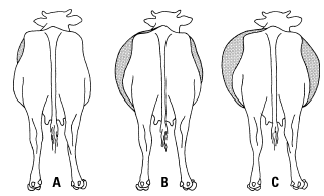
Figure 7. Three degrees of bloat: A - mild, B - moderate, C - severe
In mild bloat, the left flank is distended, the animal is not in distress, and skin over the upper flank can be easily grasped and lifted. In moderate bloat, a more obvious distension of the rumen is evident, particularly of the left flank.
The animal may appear uncomfortable, and the skin over the upper left flank is usually tight, but still can be grasped and tented. In severe bloat, gross distension of both sides of the rumen is evident, especially on the left side, and the animal may breathe through the mouth and protrude the tongue. The animal is uncomfortable and may be staggering. The skin over the left upper flank is tense and cannot be grasped and tented.
The livestock producer must take initial first-aid measures before professional veterinary attention can be provided. All animals should be removed immediately from the source of the bloat-provoking pasture or feed. In severe cases, in which gross distension, mouth-breathing, protrusion of the tongue, and staggering occur, an emergency surgery called a rumenotomy is necessary to save the animal's life. If the pressure is not released and the animal begins to stagger, it will die within minutes.
Many animals have died unnecessarily because producers were unable or reluctant to perform an emergency rumenotomy. It is always preferable to have a veterinarian perform an emergency rumenotomy, which is the most severe method of bloat treatment; however, if a veterinarian is unavailable, the following procedure may save the animal.
Using a sharp knife, make a quick incision of the skin, 6 to 12 cm in length, over the midpoint of the left flank (paralumbar fossa, Figure 8). Continue the incision through the skin, the abdominal muscles and into the rumen. This action will result in an explosive release of ruminal contents and marked relief for the animal. It will then be necessary for a veterinarian to irrigate and cleanse the wound, followed by standard surgical closure of the incision of the rumen, the abdominal wall and skin to prevent peritonitis.
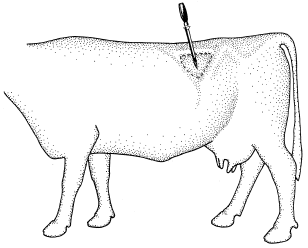
Figure 8. Insertion point for trocar and cannula - dotted triangle is the left paralumber fossa, where the hollow of the flank is found in a normal cow
Puncturing the rumen with the standard trocar and cannula is much less traumatic than an emergency rumenotomy and has been used by livestock producers and veterinarians for the emergency release of froth and gas in bloat. The standard-sized trocar and cannula (Figures 9 through 10) are adequate for the release of gas when the gas cannot be expelled with a stomach tube and when an emergency rumenotomy is not necessary.
A small skin incision about 1 cm long must be made before the trocar can be inserted through the abdominal wall in the middle of the left paralumbar fossa (Figure 8). After inserting the trocar and cannula into the rumen, remove the trocar and leave the cannula in place, allowing the froth or gas to escape. The froth may be viscous, so it may be necessary to insert a piece of wire into the cannula to stir the froth.
The cannula may be left in place for several hours or even a few days if bloat persists, with regular checks to ensure that the cannula is not blocked. Anti-foaming agents may be administered through the cannula directly into the rumen. The trocar and cannula are also useful when an opening into the rumen is necessary for several days.
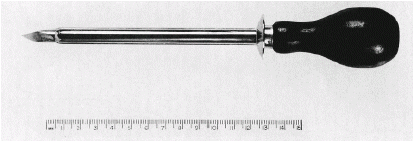
Figure 9. Standard trocar inserted into cannula

Figure 10. Standard trocar and cannula shown separately
The passage of a stomach tube is recommended when mild to moderate distension of the rumen occurs and some skin over the flank can still be grasped and tented. Even in severe cases, the stomach tube should be used because it is the least traumatic method for the release of rumen gas and pressure.
The standard-sized stomach tube (1.5 - 2.0 cm inside diameter, Figure 11) is passed through the mouth with the aid of a metal speculum (Figures 12 and 13), which prevents the animal from chewing the tube. With free gas bloat, the gas is released suddenly when the tube enters the rumen, and the ruminal pressure quickly returns to normal, usually in less than a minute.
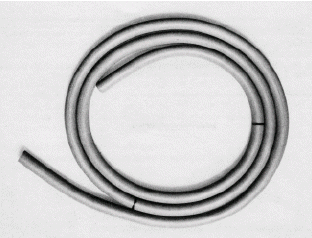
Figure 11. Standard size stomach tube (inside diameter 1.5 - 2 cm x 2 m)

Figure 12. Frick speculum - used to pass a stomach tube through the oral cavity, speculum prevents the animal from chewing the tube
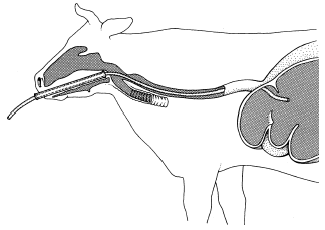
Figure 13. Position of stomach tube, used with a Frick speculum, through the oral passage into the rumen
With frothy bloat, the tube becomes plugged by froth immediately upon entering the rumen. The operator should clear the froth from the end of the tube by blowing through it and moving it back and forth to locate pockets of gas. With frothy bloat, it may be impossible to reduce the pressure, and an anti-foaming agent such as oil should be administered while the tube is in place.
If a standard-sized stomach tube is not available, a garden hose with an outside diameter of 2.0 to 2.5 cm can be passed through the oral cavity and into the rumen. The metal coupling on a garden hose must be removed to prevent injury to the mucous membranes of the mouth and esophagus. If a Frick speculum (shown in Figure 12) is unavailable, the operator will need assistance in holding the mouth partly open so that the animal is unable to chew the tube.
When the stomach tube passes through the oral cavity, the animal usually swallows it, and the tube moves down into the esophagus rather than into the lungs. If bloat has not been completely relieved with a stomach tube, but an anti-foaming agent has been administered, the animal must be watched for the next hour to determine if the treatment has been successful or if more effective measures must be taken.
In an outbreak of feedlot bloat, severe cases must be treated individually. There may be "swellers" with moderate bloat, which will usually recover without treatment if the cattle are forced to walk. After a few minutes of walking or running, the animal begins to belch.
Anti-foaming agents
Any non-toxic oil, especially a mineral oil that persists in the rumen, is an effective bloat treatment. The rate for treatment is 300 to 500 mL (10 - 12 oz) for a 450 kg (1,000 lb) animal, administered in one dose. This treatment can be repeated several times within a few hours if necessary. An emulsified oil or an oil containing an approved detergent such as dioctyl sodium sulfosuccinate is preferred because it mixes well with rumen contents. The anti-foaming agent can be administered with a stomach tube or with a large syringe directly into the rumen through the flank. The anti-foaming agent may also be delivered as a drench, using a standard drenching procedure.
The severity of the bloat usually determines the method of treatment. Every effort should be made to relieve the gas with a stomach tube, followed by the administration of anti-foaming agents through the stomach tube. If passage of the stomach tube relieves the excess pressure, then the anti-foaming agent collapses the foam. The animal begins to belch within 10 to 15 min and should recover within an hour.
The trocar and cannula method and the emergency rumenotomy should be used only when an animal cannot be relieved with the stomach tube. Those more intrusive treatments pose a greater risk to the bloat-affected animal. More recently, intraruminal injection of the detergents Alfasure or Anti Gaz Emulsion has been completely effective in the treatment of pasture bloat.
Common Questions and Answers
| 1. | What causes bloat in cattle?
Bloat in cattle is caused by feeds and diets that provide too much fine particle matter in the rumen, in combination with a supply of readily digestible nutrients that support rapid fermentation. Frothy bloat in cattle is also associated with a slow rate of clearance from the rumen in both feedlot and pasture diets. |
| 2. | Is there greater risk of pasture bloat at first frost?
Yes. Frost preserves alfalfa's immature stage of vegetative growth, which is most likely to cause bloat. With a killing frost, the frost disrupts the plant cells that release bloat-causing agents and increases the rate of cell breakdown. The plants must dehydrate or desiccate before it is safe to graze the alfalfa. |
| 3. | What are the most common bloat-causing forages?
Alfalfa and clovers. |
| 4. | Does alfalfa silage cause bloat?
No. The bloat-causing substances are degraded by the silage-making process. |
| 5. | Is bloat related to alfalfa stage of growth?
Yes. Lush, immature legume forages are most likely to cause bloat. Alfalfa stage of growth is the most important factor in bloat. |
| 6. | How can I tell whether my alfalfa hay will cause bloat?
No one can tell for sure, but leafy, well preserved immature alfalfa hay is more likely to cause a problem than coarse, mature alfalfa hay. Grass hays, especially coarse-textured ones, are useful for the control of bloat. |
| 7. | Are some cattle more susceptible to bloat?
Yes. Chronic bloaters and other bloat-susceptible animals should be culled from the herd. |
| 8. | Should household detergents be used to control bloat?
No, because these detergents often contain corrosion inhibitors and other possible toxic components that can create problems in livestock. |
| 9. | Do mineral supplements control bloat?
No. None of the mineral supplements promoted as bloat control supplements were effective in the control of bloat under experimental conditions. |
| 10. | Can bloat be reduced by swathing and wilting alfalfa?
Yes. |
References
Cheng, K-J., McAllister, T.A., Popp, J.D., Hristov, A., Mir, Z. and Shin, H.T., 1998. A review of bloat in feedlot cattle. Journal of Animal Science 76:299-308.
Hall, J.W., Cheeke, P.R., Majak, W 1989. Plant and animal factors in legume bloat. Pages 93-106 in Cheeke, PR., ed. Toxicants of plant origin. Vol. III, Proteins and amino acids. CRC Press,
Boca Raton, Fla.
Hironaka, R., Sonntag, B.H. 1980. Feedlot finishing of cattle. Agric. Can. Publ. 1591. 30 pp.
Howarth, R.E., Cheng, K-J., Majak, W, Costerton, J.W 1986. Ruminant bloat. Pages 516-527 in Milligan, L.R; Grovum, W.L.; Dobson A., eds. Digestion and metabolism in ruminants.
Prentice-Hall, Englewood Cliffs, N.J.
Majak, W., Garland, G.J., Lysyk, T.J. 2008. The effect of feeding hay before fresh alfalfa on the occurrence of frothy bloat in cattle. Can. J. Anim. Sci. 88:1-3.
Majak, W., Hall, J.W., McAllister, T.A. 2001. Practical measures for reducing the risk of alfalfa bloat in cattle. J. Range Manage. 54: 490-493.
Majak, W., Hall, J.W., McCaughey, W.P. 1995. Pasture management systems for reducing the risk of legume bloat in cattle. J. Anim. Sci. 73: 1493-1498.
Majak, W., Lysyk, T.J., Garland, G.J., Olsen, M.E. 2005. Efficacy of Alfasure for the prevention and treatment of alfalfa bloat in cattle. Can. J. Anim. Sci. 85:111-113.
Acknowledgments
The authors acknowledge with thanks the research input and technical assistance of the following people, whose work was used in the preparation of this publication:
L.R. Barberi, K.D. Jakober, F. Van Herk, Y. Wang - Agriculture and Agri-Food Canada, Lethbridge Research Centre
B.P. Berg, Alberta Agriculture, Food and Rural Development - Lethbridge Research Centre
M. Bradford, B. Brooke, D. Eustache, G. Garland, D. Thompson, I. Walker - Agriculture and Agri-Food Canada, Kamloops Research Unit
Prepared by:
W. Majak
Agriculture and Agri-Food Canada, Kamloops, BC
T. A. McAllister
Agriculture and Agri-Food Canada, Lethbridge, AB
D. McCartney
Agriculture and Agri-Food Canada, Lacombe, AB
K. Stanford
Alberta Agriculture and Rural Development, Lethbridge, AB
K-J Cheng
University of British Columbia, Vancouver, BC
Source: Agdex 440/60-1. May 2003. |
|